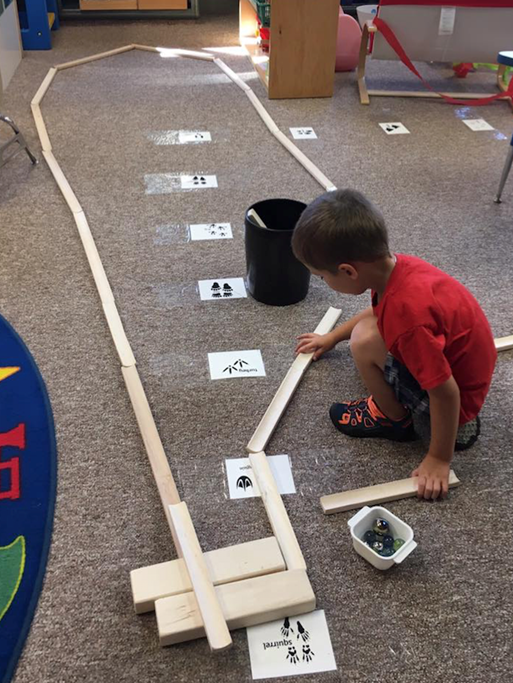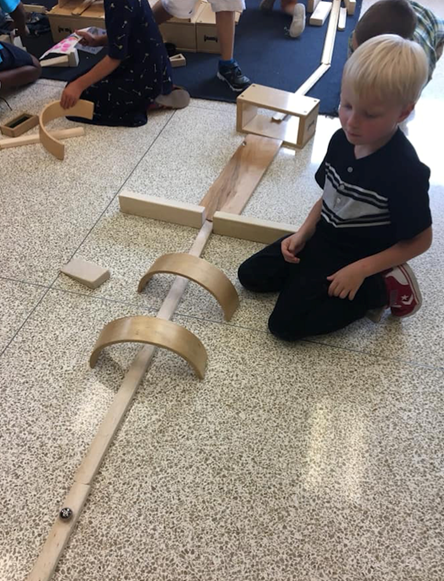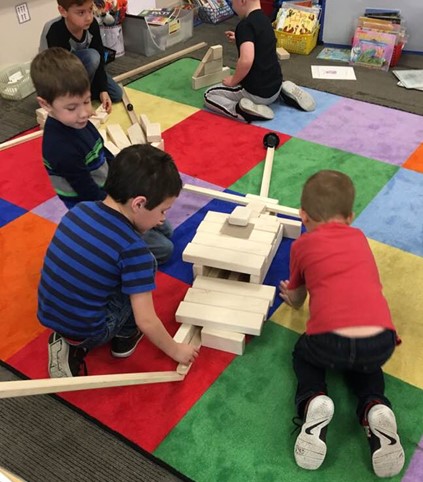Ramps & Pathways



Ramps and Pathways is STEM curriculum that involves inclined planes and movement of objects.
Children use cove molding of differing lengths and marbles of various sizes. The cove molding serves as a track for the marble.
Ramps and Pathways gives children endless possibilities to think and create. They build, test their ramp structures, make adjustments, and try again until they are successful. We have found that children are motivated to engage in this process because of the intriguing nature of the materials.
Children also use blocks of all kinds (wooden unit blocks, cardboard blocks, foam blocks) to build the base structure of the ramp.
Through Ramps and Pathways, we give experiences for children to succeed, and also to make mistakes, since we believe that children learn from mistakes.
Ramps and Pathways are appropriate and beneficial for all ages.


